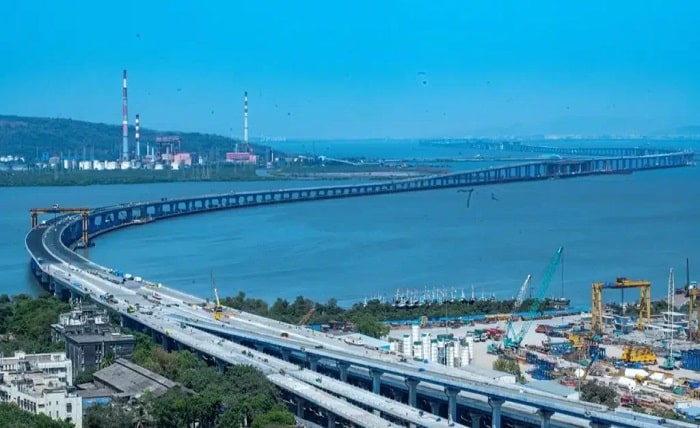Atal Setu: An Engineering Marvel Bridging Distances and Connecting Lives

Introduction
Atal Setu, also known as the third Mandovi bridge, is an iconic cable-stayed bridge that enhances connectivity in the state of Goa. Named after former Indian Prime Minister Atal Bihari Vajpayee, Atal Setu symbolizes infrastructural development and engineering prowess in India. Spanning the Mandovi River, Atal Setu connects the state capital, Panaji, with the northern regions, dramatically reducing traffic congestion and travel time.
Historical Background of Atal Setu
The idea of constructing Atal Setu emerged due to increasing congestion on the two existing Mandovi bridges. Prior to the construction of Atal Setu, travelers faced severe bottlenecks, especially during peak tourist seasons. Officially inaugurated on January 27, 2019, Atal Setu was constructed to offer relief and improve vehicular flow, thus significantly transforming the state’s infrastructure landscape. The project’s inception was rooted in addressing the daily inconvenience faced by locals and visitors alike.
Architectural Excellence of Atal Setu
Atal Setu is a remarkable example of modern bridge engineering, characterized by its cable-stayed design. With a total length of approximately 5.1 kilometers, including approach roads, Atal Setu features a main span of 620 meters. The bridge boasts 84 cables supporting the structure, each meticulously engineered for stability and strength. Atal Setu’s design not only meets high safety standards but also adds aesthetic appeal, making it a new landmark in Goa.
Impact of Atal Setu on Local Economy
The construction and opening of Atal Setu have positively influenced Goa’s economy. It has significantly eased traffic movement, reducing congestion and travel times. Local businesses have benefited from increased accessibility, with tourism and commerce experiencing notable growth since the bridge’s inauguration. Atal Setu facilitates smoother transit, directly contributing to the economic vitality and overall development of the region.
Environmental Considerations of Atal Setu
While planning and constructing Atal Setu, environmental sustainability was a critical concern. The construction process involved careful environmental assessments to minimize ecological disruption in the Mandovi River area. Measures were adopted to protect aquatic ecosystems and surrounding greenery. The Atal Setu project demonstrates how infrastructural development can coexist responsibly with ecological preservation.
Technological Innovations in Atal Setu
Atal Setu incorporates advanced engineering techniques, making it a technological benchmark. Innovations include sophisticated cable tension systems, corrosion-resistant materials, and state-of-the-art monitoring systems that ensure safety and longevity. Real-time data analytics and sensors embedded within Atal Setu enable constant monitoring of structural health, facilitating preventive maintenance and enhancing the lifespan of the bridge.
Challenges Faced During the Construction of Atal Setu
Constructing Atal Setu was a monumental task fraught with several challenges. Complexities arose from geological conditions, monsoon impacts, and logistical hurdles due to the dense urban setting. Engineering teams had to employ innovative solutions to manage the deep foundations and precise cable alignments. Despite these difficulties, Atal Setu’s completion stands as a testament to India’s capability in overcoming substantial engineering obstacles.
Future Prospects and Expansion Plans of Atal Setu
Atal Setu’s success has encouraged government authorities to contemplate further infrastructure enhancements. Plans for expanding surrounding road networks and developing complementary transportation projects are already underway. These future endeavors aim to sustain and amplify the benefits brought by Atal Setu, fostering greater regional connectivity, economic progress, and infrastructure development in Goa and beyond.
Conclusion
Atal Setu represents a significant milestone in India’s journey toward infrastructural modernization and excellence. It symbolizes not only improved connectivity and reduced travel times but also stands as an enduring testament to engineering excellence and sustainable development. With continued investments and strategic expansions, Atal Setu is set to remain a crucial artery for economic prosperity and a source of pride for generations.
FAQs
Q1: Where is Atal Setu located?
A: Atal Setu is located in Goa, India, crossing the Mandovi River and connecting Panaji to northern regions.
Q2: When was Atal Setu inaugurated?
A: Atal Setu was inaugurated on January 27, 2019.
Q3: Who is Atal Setu named after?
A: Atal Setu is named in honor of the late Indian Prime Minister Atal Bihari Vajpayee.
Q4: How has Atal Setu impacted local transportation?
A: Atal Setu has significantly reduced congestion and travel times, improving local transportation efficiency and connectivity.
Q5: What makes Atal Setu unique in terms of engineering?
A: Atal Setu is unique due to its advanced cable-stayed design, incorporating sophisticated technologies for enhanced safety, durability, and aesthetics.




